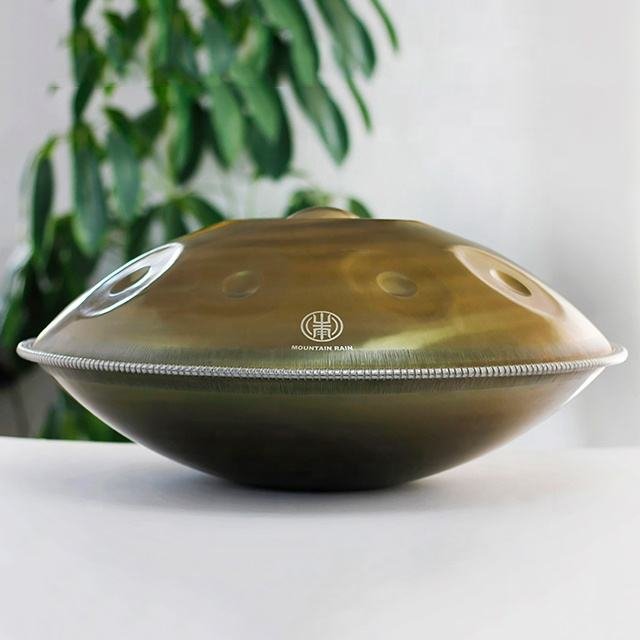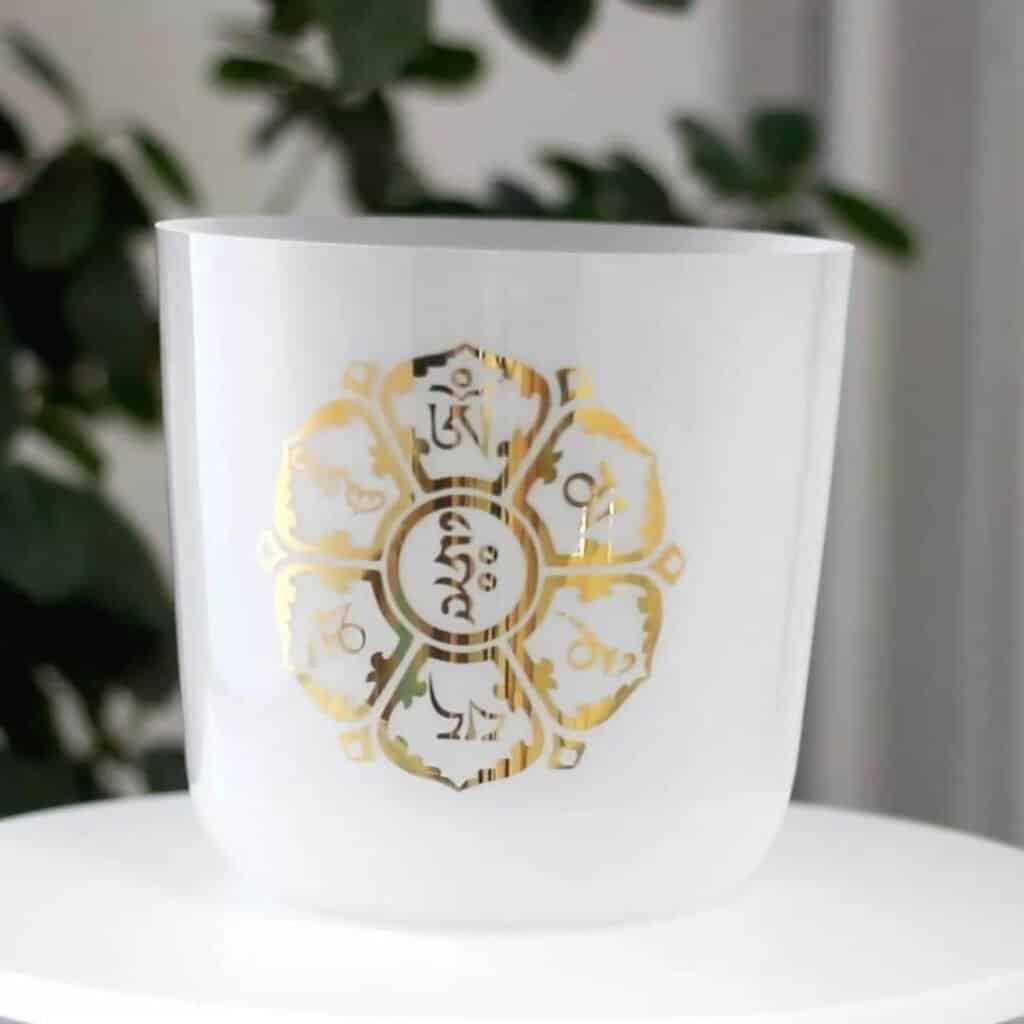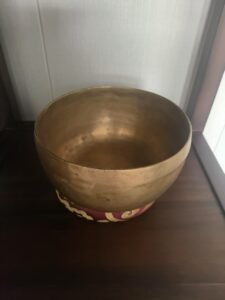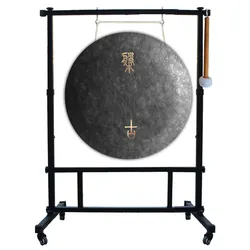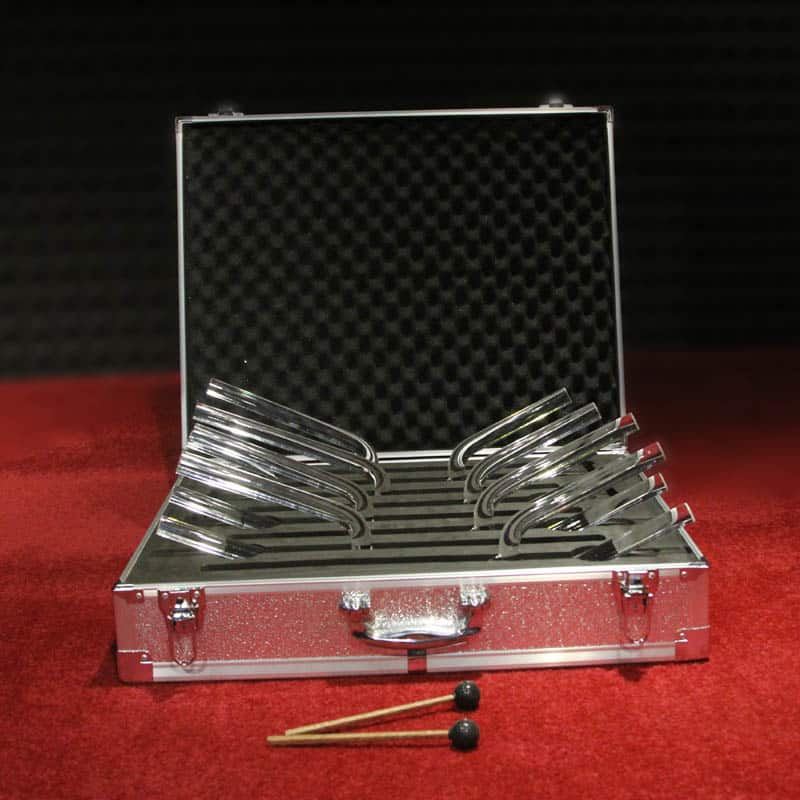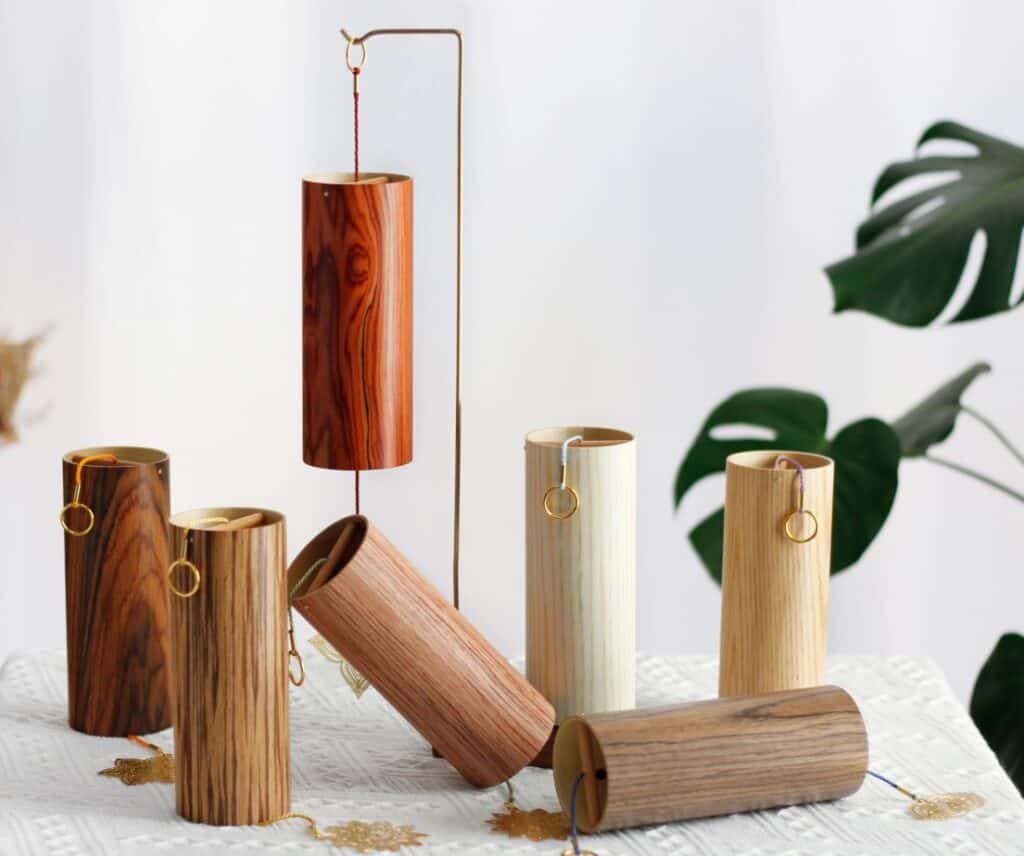Rain sticks represent a fascinating category of percussion and ambient instruments that bridge the gap between traditional cultural artifacts and modern therapeutic tools. These hollow tubes filled with small objects create the distinctive sound of falling rain when gently tilted, producing cascading acoustic effects that have captivated listeners across cultures and centuries while serving both ceremonial and practical purposes in various traditions.
The traditional cultural significance of rain sticks extends far beyond simple sound creation to include spiritual practices, weather ceremonies, and cultural identity expressions developed by indigenous communities throughout South America and other regions. However, modern applications have expanded to include therapeutic uses, meditation support, sound healing practices, and musical expression that honor traditional origins while serving contemporary wellness and artistic needs.
Rain sticks offer numerous benefits for meditation, sound healing, and musical expression due to their ability to create sustained, flowing soundscapes that promote relaxation and contemplative states. The organic, natural quality of rain stick sounds provides acoustic environments that support stress reduction, meditation practice, and therapeutic applications while offering unique musical textures for recording and performance applications.
Selecting the right rain stick requires understanding multiple factors including construction materials, sound quality characteristics, size considerations, and intended applications that determine both immediate satisfaction and long-term value. The wide variety of rain stick designs, from traditional cactus construction to modern synthetic alternatives, means that careful evaluation of acoustic properties and construction quality becomes essential for making informed purchasing decisions.
This comprehensive guide will explore every aspect of rain stick selection, from understanding construction methods and acoustic properties to evaluating quality factors and practical applications. Whether you’re seeking authentic traditional instruments, modern therapeutic tools, or versatile musical accessories, this guide will help you choose rain sticks that provide years of beautiful sound and meaningful use while respecting both cultural heritage and personal needs.
Understanding Rain Stick Construction and Materials
The construction methods and materials used in rain stick creation significantly impact both acoustic performance and durability, making understanding of different approaches essential for selecting instruments that meet your specific sound quality and longevity requirements.
Traditional cactus construction versus modern alternatives represents the fundamental choice between authentic materials and contemporary manufacturing approaches that offer different advantages in terms of sound quality, durability, and environmental impact. Traditional rain sticks utilize dried cactus tubes, particularly from large columnar cacti species, creating instruments with natural acoustic properties and cultural authenticity that cannot be replicated with artificial materials.
Authentic cactus rain sticks offer unique acoustic characteristics derived from the natural cellular structure and density variations of cactus wood, creating complex harmonic content and organic sound qualities that distinguish them from synthetic alternatives. The natural irregularities and varying wall thickness in cactus construction contribute to acoustic complexity while providing authentic cultural connection and superior sound quality that justifies higher costs for serious collectors and practitioners.
However, traditional cactus construction also presents limitations including higher costs, environmental concerns about sustainable harvesting, and potential durability issues in humid climates where natural materials may be more susceptible to deterioration and structural problems over time.
Modern manufacturing approaches attempt to balance acoustic quality with practical considerations while addressing environmental and cost concerns that affect accessibility and long-term sustainability. Understanding these trade-offs helps evaluate whether traditional authenticity or modern practicality better serves your specific needs and priorities.
Bamboo rain stick variations provide environmentally sustainable alternatives that offer excellent acoustic properties while addressing environmental concerns about cactus harvesting and supporting renewable resource utilization. Quality bamboo construction can produce sound characteristics approaching traditional cactus instruments while offering superior durability and weather resistance for regular use.
Bamboo’s natural hollow structure and acoustic properties create resonant chambers that enhance sound quality while the material’s strength and flexibility provide durability advantages for portable use and varying environmental conditions. Different bamboo species offer varying acoustic characteristics that affect tone quality and sound duration.
However, bamboo construction requires careful selection and preparation to achieve optimal acoustic results, as variations in wall thickness and internal preparation significantly impact sound quality and performance characteristics throughout the instrument’s useful life.
Cardboard and plastic rain stick variations represent entry-level options that provide affordability and accessibility while potentially compromising sound quality and durability compared to natural material alternatives. These options serve educational, children’s, and budget-conscious applications while offering practical advantages including light weight and weather resistance.
Quality cardboard construction can produce surprisingly good sound characteristics while maintaining affordability that makes rain sticks accessible for educational programs, children’s activities, and experimental use without significant financial investment or concern about damage during casual handling.
Plastic rain stick options offer maximum durability and weather resistance while typically producing more artificial sound characteristics that may lack the organic warmth and complexity of natural material alternatives. These instruments serve applications where durability and low maintenance take priority over acoustic refinement.
Internal fill materials including seeds, beads, rice, and synthetic options dramatically affect both sound characteristics and longevity while determining the acoustic signature that distinguishes different rain stick designs and quality levels.
Traditional seed fills using various dried seeds, beans, and small organic materials create authentic sound characteristics with natural variation and organic acoustic qualities that enhance the realistic rain simulation while providing cultural authenticity and superior sound quality.
Different seed types produce varying acoustic effects, with larger seeds creating deeper, more dramatic sounds while smaller seeds produce finer, more delicate rain effects that serve different musical and therapeutic applications throughout various use contexts.
Bead fills using glass, ceramic, or synthetic beads offer controlled acoustic characteristics with consistent size and density that create predictable sound patterns while providing durability and resistance to humidity and pest issues that might affect organic materials over time.
Rice and grain fills provide affordable options with good acoustic characteristics while potentially presenting longevity concerns in humid environments where organic materials might deteriorate or attract pests that could affect both sound quality and instrument hygiene.
Internal spike and nail arrangements create the cascading effect that produces rain stick sounds by creating obstacles that control the flow of internal fill materials as instruments are tilted. The design and placement of these internal elements significantly impact both sound quality and flow characteristics.
Traditional construction uses cactus spines or small nails driven into the internal surface while creating spiral or random patterns that affect flow rate and acoustic character throughout the sound production process. Different spike patterns create varying acoustic effects from rapid cascades to slow, controlled flows.
Spiral spike arrangements create controlled flow patterns that produce sustained, even rain sounds while providing consistent acoustic characteristics that serve meditation and therapeutic applications requiring predictable sound duration and quality.
Random spike placement may create more natural, varied acoustic effects while potentially producing less predictable sound characteristics that appeal to those seeking organic variation and natural unpredictability in rain stick performance.
Length and diameter relationships affecting sound characteristics involve understanding how physical dimensions determine acoustic output, sound duration, and practical usability that serve different applications and user preferences.
Longer rain sticks generally produce longer sound duration with more dramatic acoustic presence while creating transportation and storage challenges that must be balanced against acoustic advantages for specific applications and user needs.
Diameter affects both volume output and internal capacity for fill materials while influencing the acoustic character and projection capabilities that determine suitability for different applications from intimate personal use to group settings requiring greater acoustic presence.
Handcrafted versus mass-produced quality differences reflect varying approaches to construction that affect both acoustic performance and overall instrument quality while influencing both cost and availability considerations for different budget levels and quality expectations.
Handcrafted rain sticks often receive individual attention to acoustic optimization while providing unique characteristics and superior quality control that distinguishes them from mass-produced alternatives lacking individual acoustic tuning and quality assessment.
Mass production enables affordability and consistent availability while potentially sacrificing acoustic refinement and individual character that distinguish handcrafted instruments from factory-produced alternatives focused primarily on cost reduction and manufacturing efficiency.
Sealed versus refillable designs present different approaches to maintenance and longevity while affecting both acoustic consistency and long-term usability throughout extended ownership periods and regular use applications.
Sealed construction provides acoustic stability and eliminates maintenance requirements while preventing accidental spills and ensuring consistent performance throughout the instrument’s useful life without user intervention or maintenance concerns.
Refillable designs allow acoustic customization and maintenance while providing opportunities to experiment with different fill materials and replace deteriorated contents that maintain optimal performance throughout extended ownership and regular use.
Sound Quality Assessment and Acoustic Properties
Evaluating the acoustic performance of rain sticks requires systematic assessment of multiple sound characteristics that determine both immediate satisfaction and long-term enjoyment while ensuring that instruments meet specific application requirements and personal preferences.
Duration and flow characteristics of rain sounds represent fundamental acoustic properties that distinguish quality rain sticks from inferior alternatives while determining suitability for various applications from brief musical accents to extended meditation support and therapeutic sound environments.
High-quality rain sticks produce sustained, controlled sound flow that can last 15-30 seconds or more when properly tilted, creating extended acoustic experiences that support meditation practice and therapeutic applications requiring sustained ambient sound presence throughout sessions.
Flow consistency throughout the sound duration indicates quality construction and appropriate internal design while ensuring that acoustic effects remain engaging and beautiful throughout the complete sound cycle rather than producing initial drama followed by disappointing fade or inconsistent continuation.
The transition from initial cascade to sustained flow and final completion should feel natural and musically satisfying while avoiding abrupt endings or irregular patterns that might detract from meditative and therapeutic effectiveness throughout sound production cycles.
Testing flow characteristics requires systematic evaluation using consistent tilting techniques while noting duration, consistency, and aesthetic satisfaction that determine acoustic quality and suitability for intended applications and personal preferences.
Volume levels and dynamic range capabilities affect both practical usability and acoustic versatility while determining appropriate applications from intimate personal practice to group settings requiring greater acoustic presence and projection.
Quality rain sticks should produce adequate volume for intended applications while maintaining acoustic beauty and avoiding harsh or overwhelming characteristics that might detract from meditative and therapeutic effectiveness throughout various use contexts and environmental conditions.
Dynamic range assessment involves testing both gentle and vigorous activation while evaluating how different handling techniques affect volume output and acoustic character throughout various playing approaches and application requirements.
Consider environmental factors including room acoustics and ambient noise levels while evaluating whether specific rain sticks provide adequate acoustic presence for intended use contexts and application requirements throughout various listening environments.
Pitch relationships and frequency content analysis help evaluate the harmonic richness and acoustic complexity that distinguish superior rain sticks from basic alternatives while determining musical utility and aesthetic satisfaction throughout various applications.
Quality rain sticks produce complex frequency content that includes both higher frequencies from individual impacts and lower frequency resonance from the instrument body, creating rich acoustic textures that feel natural and engaging rather than thin or artificial.
Harmonic content analysis involves listening for acoustic depth and complexity while evaluating whether rain stick sounds feel full and satisfying or limited and artificial throughout sound production and aesthetic evaluation processes.
Frequency balance should feel natural and rain-like while avoiding excessive emphasis on particular frequency ranges that might create artificial or unpleasant acoustic characteristics inappropriate for meditation and therapeutic applications.
Realistic rain simulation versus musical percussion qualities represents different acoustic goals that serve various applications while determining whether instruments function better as ambient sound creators or musical percussion accessories.
Authentic rain simulation emphasizes natural flow patterns and organic acoustic characteristics while prioritizing realism and meditative quality over musical precision and rhythmic capabilities throughout acoustic design and construction optimization.
Musical percussion applications may emphasize rhythmic capabilities and dynamic range while potentially sacrificing some realism for versatility and performance capability throughout musical expression and ensemble applications.
Understanding intended applications helps evaluate whether acoustic characteristics serve specific goals while ensuring that rain stick selection supports rather than compromises intended use patterns and satisfaction throughout ownership and regular use.
Internal material density and flow pattern effects significantly impact both acoustic characteristics and sound duration while determining the overall acoustic signature that distinguishes different rain stick designs and construction approaches.
Dense internal fills produce more dramatic acoustic effects with greater volume and impact intensity while potentially reducing sound duration due to faster flow rates through internal obstacles and construction elements.
Lighter fills extend sound duration while potentially reducing acoustic intensity and impact characteristics that serve different applications and personal preferences throughout various use contexts and acoustic requirements.
Flow pattern optimization involves balancing material density with internal construction design while achieving desired acoustic characteristics that serve specific applications and aesthetic preferences throughout rain stick selection and evaluation.
Testing methods for evaluating sound quality provide systematic approaches to acoustic assessment while ensuring comprehensive evaluation of characteristics that determine satisfaction and suitability for intended applications and personal preferences.
Controlled testing environments help eliminate external factors while providing consistent conditions for comparing different rain sticks and evaluating specific acoustic characteristics objectively throughout selection and purchasing processes.
Systematic tilting techniques ensure consistent activation while revealing acoustic characteristics and flow patterns that determine quality and suitability for intended applications throughout evaluation and comparison procedures.
Recording test sessions provides objective documentation while allowing detailed analysis and comparison that supports informed purchasing decisions and quality assessment verification throughout rain stick selection processes.
Common acoustic problems and red flags to avoid include construction defects and design limitations that significantly impact performance while indicating poor quality or inappropriate construction that affects both immediate satisfaction and long-term durability.
Uneven flow patterns suggesting internal construction problems may indicate poor spike placement or inadequate internal design while creating unsatisfying acoustic characteristics that detract from both musical and therapeutic effectiveness.
Excessive noise from loose construction or inappropriate fill materials indicates quality problems while creating distracting acoustic artifacts that interfere with meditative and therapeutic applications throughout regular use and acoustic enjoyment.
Short sound duration often indicates inadequate internal construction or inappropriate material selection while limiting usefulness for applications requiring sustained acoustic effects and extended sound production throughout meditation and therapeutic sessions.
Size Selection for Different Applications
Selecting appropriate rain stick sizes requires understanding how dimensions affect both acoustic performance and practical usability while matching instrument characteristics to specific applications and user requirements that determine long-term satisfaction and effectiveness.
Small rain sticks for personal meditation and therapy provide intimate acoustic experiences suitable for close-range listening while offering portability and discretion that serves personal practice and therapeutic applications requiring subtle acoustic presence and convenient handling.
Personal meditation applications often benefit from 12-16 inch rain sticks that produce gentle, intimate sounds suitable for individual practice while maintaining portability for travel and flexible positioning during various meditation practices and personal wellness routines.
Therapeutic applications requiring precise volume control and non-intrusive acoustic presence favor smaller rain sticks that provide adequate sound production while avoiding overwhelming characteristics that might interfere with therapeutic processes and client comfort throughout healing sessions.
Portability advantages of small rain sticks enable convenient transport and storage while supporting mobile practice and therapeutic applications that require instrument availability in various locations and contexts throughout personal and professional use.
Consider acoustic limitations of small sizes while ensuring adequate sound production for intended applications and personal satisfaction throughout regular use and acoustic enjoyment in various environmental contexts and listening conditions.
Medium sizes for moderate ambient sound and musical use represent versatile choices that balance acoustic presence with practical handling while providing sufficient sound production for various applications without creating excessive size or weight challenges.
18-24 inch rain sticks typically provide optimal balance between acoustic performance and practical usability while offering sufficient sound duration and volume for most residential and professional applications throughout various use contexts and environmental conditions.
Musical applications benefit from medium sizes that provide adequate volume and dynamic range while maintaining controllable characteristics that serve both solo performance and ensemble integration throughout various musical expressions and recording applications.
Group meditation and therapy applications may require medium sizes that provide sufficient acoustic presence for multiple participants while maintaining gentle characteristics appropriate for collective healing and spiritual practice throughout group sessions and workshops.
Versatility advantages of medium sizes serve multiple applications while providing single instrument solutions that eliminate need for multiple rain stick purchases throughout various personal and professional use contexts.
Large rain sticks for dramatic effects and group applications provide maximum acoustic presence and extended sound duration while creating impressive sonic experiences that serve performance and large group applications requiring substantial acoustic output.
36+ inch rain sticks create dramatic acoustic effects with extended sound duration and substantial volume output while requiring adequate storage space and careful handling that accommodates size and weight considerations throughout ownership and use.
Performance applications requiring maximum acoustic impact benefit from large rain sticks that provide impressive sonic presence while creating memorable acoustic experiences for audiences and participants throughout various performance and presentation contexts.
Large group applications including workshops, ceremonies, and educational programs may require substantial acoustic presence that serves multiple participants while ensuring adequate sound projection throughout diverse group sizes and acoustic environments.
Consider practical limitations including storage requirements, transportation challenges, and handling difficulties while evaluating whether acoustic advantages justify size-related compromises throughout ownership and regular use applications.
Length considerations across 12″, 18″, 24″, 36″+ options provide systematic approach to size selection while understanding how length affects acoustic characteristics and practical usability throughout various applications and user requirements.
12-inch options emphasize portability and intimate acoustic characteristics while potentially limiting sound duration and volume output for applications requiring greater acoustic presence and extended sound production throughout various use contexts.
18-inch sizes often provide optimal balance for most users while offering good acoustic performance and reasonable portability that serves diverse applications without excessive compromise in either acoustic quality or practical convenience.
24-inch rain sticks extend sound duration and volume capabilities while maintaining reasonable portability for most users and applications throughout regular use and transport requirements in various contexts and environments.
36+ inch options maximize acoustic performance while creating significant practical challenges that must be justified by specific acoustic requirements and application needs throughout ownership and regular use considerations.
Diameter effects on volume and sound character influence both acoustic output and internal capacity while affecting the overall acoustic signature and performance characteristics that determine suitability for various applications and personal preferences.
Larger diameter rain sticks typically produce greater volume output and fuller acoustic characteristics while potentially requiring more internal fill material and creating larger, heavier instruments that affect portability and handling convenience.
Smaller diameter options emphasize portability and discrete acoustic presence while potentially limiting volume output and acoustic richness that serves different applications and user preferences throughout various use contexts and requirements.
Understanding diameter effects helps optimize size selection while balancing acoustic requirements with practical considerations that determine overall satisfaction and usability throughout rain stick ownership and regular use.
Portability versus acoustic presence trade-offs require careful consideration of primary use patterns while determining optimal size selection that serves specific applications and personal preferences throughout ownership and regular use requirements.
Mobile applications including travel meditation, therapeutic house calls, and outdoor activities emphasize portability while potentially accepting acoustic limitations that serve transportation and convenience requirements throughout mobile use contexts.
Stationary applications including home meditation spaces, therapy offices, and musical studios may prioritize acoustic performance while accepting size limitations that serve acoustic requirements throughout fixed location use and acoustic optimization.
Age-appropriate sizing for children and educational use requires special consideration of handling capabilities while ensuring safety and acoustic effectiveness that serves educational goals and child development throughout various learning and therapeutic applications.
Children’s rain sticks typically range from 8-12 inches while providing safe handling characteristics and appropriate acoustic output that serves educational and therapeutic applications without overwhelming young users or creating safety concerns.
Educational applications may benefit from durable, moderately sized rain sticks that withstand classroom use while providing adequate acoustic demonstration and student engagement throughout various learning activities and cultural education programs.
Consider age-related handling capabilities while ensuring instruments remain safe and enjoyable throughout educational use while providing meaningful acoustic experiences that support learning and cultural appreciation throughout various educational contexts.
Quality Factors and Durability Assessment
Assessing construction quality and durability in rain sticks requires systematic evaluation of materials, workmanship, and design factors that determine both immediate performance and long-term satisfaction throughout regular use and varying environmental conditions.
Construction quality indicators and structural integrity assessment help identify well-made instruments while avoiding poorly constructed alternatives that may fail prematurely or provide unsatisfactory acoustic performance throughout ownership and regular use applications.
Joint quality examination focuses on end cap attachment and sealing while ensuring structural integrity that prevents leaks and maintains acoustic performance throughout handling and environmental exposure over extended ownership periods.
Internal construction assessment involves evaluating spike placement, fill material distribution, and overall internal design while ensuring optimal acoustic performance and structural stability throughout regular use and handling requirements.
Surface finish quality indicates overall craftsmanship while affecting both aesthetic appeal and durability that determine satisfaction and longevity throughout ownership and regular use in various environmental conditions and handling situations.
Material quality evaluation includes assessment of tube materials, internal components, and finish treatments while determining durability and performance characteristics that affect both immediate satisfaction and long-term value throughout ownership periods.
Seal quality and leak prevention assessment ensure long-term acoustic stability while preventing fill material loss that could compromise performance and create maintenance challenges throughout ownership and regular use applications.
End cap security involves testing attachment methods while ensuring reliable sealing that maintains internal fill integrity throughout handling and environmental exposure over extended ownership and use periods.
Seal testing procedures include gentle pressure application while checking for movement or gaps that might indicate inadequate sealing and potential future leakage problems throughout ownership and regular use requirements.
Visual inspection of sealing methods helps evaluate construction quality while identifying potential weak points that might affect long-term performance and reliability throughout ownership and varying use conditions.
Professional sealing methods including adhesives, mechanical fastening, and compression systems provide different levels of security while affecting both durability and potential repairability throughout extended ownership and maintenance requirements.
Material durability for regular use and transport requires understanding how different construction materials perform under typical use conditions while ensuring adequate longevity and reliable performance throughout ownership periods and regular use applications.
Natural material durability varies significantly based on species, preparation methods, and environmental exposure while requiring understanding of maintenance requirements and expected lifespan throughout ownership and regular use conditions.
Synthetic material alternatives may offer superior durability while potentially compromising acoustic quality and cultural authenticity that affects both performance satisfaction and personal values throughout ownership and use preferences.
Impact resistance testing helps evaluate handling durability while ensuring adequate protection against accidental damage throughout regular use and transport requirements in various environmental conditions and use contexts.
Environmental resistance including humidity tolerance and temperature stability affects performance consistency while determining appropriate storage and use conditions that maintain optimal acoustic characteristics throughout varying environmental exposures.
Weather resistance for outdoor applications becomes important for instruments used in various environmental conditions while ensuring continued performance and structural integrity throughout exposure to moisture, temperature changes, and other environmental factors.
Moisture resistance prevents internal contamination while maintaining acoustic quality and preventing deterioration that could affect both sound production and structural integrity throughout humid conditions and environmental exposure.
UV resistance protects surface materials while maintaining aesthetic appeal and structural integrity throughout sun exposure and outdoor use requirements in various environmental conditions and seasonal variations.
Temperature stability prevents structural stress while maintaining acoustic characteristics throughout environmental temperature variations and seasonal changes that affect outdoor and indoor use conditions.
Joint construction and end cap security determine structural reliability while affecting both acoustic performance and long-term durability throughout handling and environmental exposure over extended ownership periods.
Mechanical joint design provides secure attachment while potentially offering repairability advantages that serve long-term maintenance and extended ownership throughout varying use conditions and potential repair requirements.
Adhesive bonding methods may provide secure, permanent attachment while potentially limiting repairability options that affect long-term maintenance and ownership considerations throughout extended use periods.
Compression fitting systems offer secure attachment while potentially providing maintenance access that serves long-term ownership and performance optimization throughout extended use and maintenance requirements.
Expected lifespan and wear patterns help establish realistic expectations while planning appropriate care and maintenance that maximize instrument longevity and continued satisfaction throughout ownership and regular use applications.
High-quality rain sticks with proper care often provide many years of satisfactory performance while requiring minimal maintenance and careful handling that preserves both acoustic quality and structural integrity throughout extended ownership.
Typical wear patterns include surface finish deterioration and potential seal degradation while requiring understanding of maintenance requirements and replacement timing that optimize long-term satisfaction and performance throughout ownership periods.
Maintenance requirements and repairability affect total ownership costs while determining long-term satisfaction and instrument availability throughout extended use periods and potential repair or restoration needs.
Preventive maintenance including proper storage and careful handling helps maximize lifespan while preventing premature deterioration and maintaining optimal performance throughout ownership and regular use applications.
Repair possibilities vary based on construction methods while determining whether maintenance or replacement provides better value throughout extended ownership and continued use requirements in various applications and contexts.
Practical Applications and Usage Considerations
Understanding the diverse applications and practical considerations for rain stick use helps ensure optimal instrument selection while maximizing satisfaction and effectiveness throughout various personal and professional applications.
Meditation and relaxation therapy applications utilize rain stick sounds to create peaceful acoustic environments that support contemplative practice while providing gentle sound stimulation that promotes relaxation and stress reduction throughout therapeutic and personal wellness sessions.
Personal meditation practice benefits from rain stick sounds that provide acoustic anchoring while supporting concentration and contemplative awareness throughout various meditation techniques and spiritual practices that incorporate sound elements.
Guided meditation applications may utilize rain stick sounds as transition markers while creating acoustic cues that support session structure and participant guidance throughout group and individual meditation experiences.
Stress reduction applications employ gentle rain stick sounds while creating peaceful acoustic environments that promote physiological relaxation and emotional calm throughout therapeutic sessions and personal stress management practices.
Sleep support applications utilize soft rain stick sounds while creating acoustic environments that promote rest and relaxation throughout bedtime routines and sleep preparation that benefits from gentle ambient sound presence.
Musical performance and recording uses expand rain stick applications beyond therapeutic contexts while incorporating these instruments into various musical expressions and creative projects that benefit from unique acoustic textures and ambient sound qualities.
Solo performance applications showcase rain stick capabilities while creating atmospheric musical experiences that highlight the instrument’s unique acoustic characteristics throughout various performance contexts and artistic expressions.
Ensemble integration combines rain sticks with other instruments while adding unique acoustic textures that enhance musical depth and atmospheric quality throughout various musical collaborations and creative projects.
Recording applications capture rain stick sounds while creating audio resources for meditation recordings, musical productions, and therapeutic audio content that benefits from authentic rain simulation and acoustic beauty.
Sound design applications utilize rain stick recordings while creating atmospheric audio content for various media productions and creative projects that require natural sound effects and ambient audio elements.
Educational and therapeutic applications for children provide engaging sound experiences while supporting learning and development through multisensory activities that incorporate sound exploration and cultural education throughout various educational contexts.
Music education programs utilize rain sticks while teaching rhythm, cultural appreciation, and sound exploration that supports musical development and cultural awareness throughout various educational applications and learning experiences.
Therapeutic applications for children with special needs may benefit from rain stick sounds while providing sensory stimulation and calming acoustic experiences that support therapeutic goals and developmental objectives throughout specialized care and education.
Cultural education applications introduce students to traditional instruments while providing authentic cultural experiences that support understanding and appreciation of diverse musical traditions throughout educational programs and cultural awareness activities.
Sound healing and ambient music creation utilizes rain stick characteristics while creating comprehensive healing environments that address multiple wellness dimensions through integrated sound therapy approaches and holistic healing practices.
Sound therapy sessions incorporate rain stick sounds while providing vibrational healing and acoustic support that complements other therapeutic modalities throughout comprehensive wellness approaches and holistic healing practices.
Ambient music creation utilizes rain stick textures while building atmospheric compositions that support relaxation and contemplative listening throughout various creative projects and therapeutic audio production.
Group therapy and workshop integration employs rain sticks while creating shared acoustic experiences that support group bonding and collective healing throughout various therapeutic and educational group activities.
Workshop facilitation uses rain stick sounds while creating transition markers and acoustic environments that support group dynamics and session structure throughout various educational and therapeutic group experiences.
Storage and transport considerations affect practical usability while determining appropriate care procedures that maintain instrument quality and ensure convenient access throughout various use applications and ownership requirements.
Protective storage prevents damage while maintaining acoustic quality and structural integrity throughout periods of non-use and environmental protection requirements that preserve long-term instrument value and performance.
Transport solutions provide protection while enabling mobile use throughout various applications and locations that require instrument portability and continued acoustic quality throughout travel and transport requirements.
Volume control techniques and playing methods provide dynamic expression while ensuring appropriate acoustic levels for various applications and environmental contexts throughout different use situations and acoustic requirements.
Gentle activation produces subtle effects while serving intimate applications and sensitive acoustic environments that require minimal sound production and careful volume management throughout various use contexts.
Dynamic activation creates dramatic effects while serving performance and group applications that require greater acoustic presence and impressive sound production throughout various presentation and entertainment contexts.
Where to Buy and Budget Considerations
Finding quality rain sticks while managing costs effectively requires understanding market options, quality indicators, and value considerations that ensure satisfactory purchases and long-term ownership satisfaction throughout various budget levels and quality expectations.
Reputable sources for authentic and quality rain sticks provide assurance of construction quality while offering expertise and customer support that enhance purchasing decisions and ensure satisfactory instrument selection throughout various quality levels and price ranges.
Specialty music stores often maintain knowledgeable staff while providing opportunities for hands-on evaluation that support informed purchasing decisions and ensure acoustic satisfaction throughout various instrument options and quality levels.
Fair trade organizations support ethical manufacturing while ensuring authentic cultural products and appropriate compensation for artisan communities throughout traditional construction methods and cultural authenticity preservation.
Artisan markets and cultural festivals provide direct access to makers while supporting traditional craftsmanship and cultural preservation throughout authentic instrument acquisition and community support applications.
Online marketplaces offer extensive selection while requiring careful evaluation of seller reputation and product descriptions that ensure quality and authenticity throughout remote purchasing and instrument selection processes.
Online versus in-person purchasing advantages provide different benefits while serving various priorities including convenience, selection, evaluation opportunities, and pricing considerations throughout rain stick acquisition and purchasing decisions.
In-person purchasing allows acoustic evaluation while providing immediate possession and supporting local businesses throughout instrument selection and community economic support that benefits local music communities.
Online purchasing offers extensive selection while potentially providing better pricing and access to specialized products that may not be available locally throughout various quality levels and construction options.
Hybrid approaches combining online research with in-person evaluation maximize benefits while ensuring informed decisions that balance convenience with acoustic assessment throughout purchasing processes and instrument selection.
Price ranges across different quality levels and materials reflect varying construction costs while providing options for various budgets and quality expectations throughout different applications and ownership requirements.
Entry-level rain sticks ($10-30) provide basic functionality while potentially limiting acoustic quality and durability for casual use and educational applications that prioritize affordability over acoustic refinement and long-term durability.
Mid-range options ($30-80) often provide optimal value while balancing acoustic quality with reasonable costs that serve most personal and professional applications throughout regular use and extended ownership.
Premium rain sticks ($80-200+) offer superior construction while providing exceptional acoustic quality and cultural authenticity that justify higher costs for serious practitioners and professional applications throughout demanding use requirements.
Handcrafted artisan pieces may command premium prices while providing unique acoustic characteristics and cultural authenticity that serve collectors and practitioners seeking authentic traditional instruments throughout specialized applications.
Value considerations for longevity and satisfaction include total cost of ownership while evaluating long-term benefits that justify initial investment and provide continued satisfaction throughout extended ownership and regular use.
Construction quality affects longevity while determining replacement frequency and total ownership costs that influence value calculations and purchasing decisions throughout extended use and ownership considerations.
Acoustic quality impacts satisfaction while determining whether instruments meet application requirements and provide continued enjoyment throughout ownership and regular use in various contexts and applications.
Resale value considerations may affect purchase decisions while providing options for instrument upgrading and collection management throughout evolving needs and quality preferences.
Seasonal availability and import considerations affect purchasing timing while determining optimal acquisition strategies that ensure availability and appropriate pricing throughout various market conditions and seasonal variations.
Cultural instrument availability may vary seasonally while affecting pricing and selection that influences purchasing timing and acquisition strategies throughout traditional production cycles and import schedules.
Holiday and festival periods may offer special availability while providing opportunities for direct artisan purchases and cultural authenticity throughout various cultural celebrations and community events.
Import considerations including shipping costs and delivery times affect total purchase costs while determining realistic expectations for acquisition timing and budget planning throughout international purchasing and instrument acquisition.
Warranty and return policy importance provides protection while ensuring customer satisfaction and quality assurance throughout purchasing decisions and long-term ownership satisfaction.
Construction warranties cover defects while providing protection against premature failure and quality issues that might affect satisfaction and continued use throughout ownership and regular use applications.
Satisfaction guarantees allow returns while providing confidence in purchasing decisions and ensuring acoustic satisfaction throughout instrument evaluation and selection processes.
Clear return policies protect purchases while ensuring access to remedies if instruments fail to meet expectations throughout evaluation and satisfaction assessment procedures.
Supporting fair trade and sustainable practices contributes to ethical consumption while ensuring appropriate compensation and environmental responsibility throughout purchasing decisions and cultural sensitivity.
Fair trade certification ensures ethical manufacturing while supporting artisan communities and traditional craftsmanship that preserves cultural heritage and provides appropriate economic benefits throughout traditional production methods.
Sustainable material sourcing addresses environmental concerns while supporting responsible harvesting and manufacturing practices that preserve natural resources and traditional production methods throughout environmentally conscious purchasing decisions.
Cultural respect considerations ensure appropriate appreciation while avoiding exploitation and supporting authentic cultural preservation throughout purchasing decisions and instrument use applications.
Conclusion
Selecting the right rain stick requires careful consideration of construction quality, acoustic properties, size requirements, and intended applications that determine both immediate satisfaction and long-term value throughout ownership and regular use. The unique characteristics of rain stick sounds create distinctive opportunities for meditation support, therapeutic application, and musical expression that justify thoughtful selection and appropriate investment.
Understanding construction materials and methods helps evaluate quality levels while ensuring that your rain stick choice provides desired acoustic characteristics and adequate durability for intended applications throughout regular use and varying environmental conditions. Whether seeking traditional cactus construction or modern alternatives, focus on acoustic quality and construction integrity that serve your specific needs and preferences.
Size selection significantly impacts both acoustic performance and practical usability, requiring balance between sound quality desires and handling convenience that serves your primary applications and use patterns. Consider both current needs and potential future applications while allowing room for growth in your rain stick practice and appreciation.
Quality assessment through systematic evaluation of sound characteristics, construction details, and materials ensures satisfactory purchases while avoiding disappointing instruments that fail to meet expectations or perform adequately throughout intended use applications and ownership periods.
Whether pursuing rain sticks for personal meditation enhancement, therapeutic practice, musical expression, or cultural appreciation, quality instruments provide years of beautiful sound and meaningful use while honoring both traditional heritage and contemporary applications. Begin your search with clear understanding of your needs while remaining open to discoveries that might expand your appreciation and use of these remarkable instruments.
Invest in quality rain sticks from reputable sources who understand both the technical and cultural dimensions of these instruments, ensuring that your selection provides acoustic beauty and cultural respect while serving your specific goals and applications throughout extended ownership and regular use.


